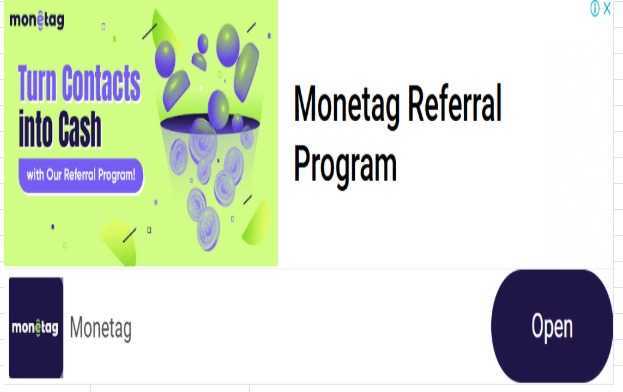Development Approach and Life Cycle – Project Performance Domain
Introduction
Projects are unique, temporary endeavors that require structured planning and execution to deliver value. While the scope and objectives may vary, the underlying need for a thoughtful, well-defined framework remains constant. This is where the Development Approach and Life Cycle Performance Domain from the PMBOK® Guide – Seventh Edition comes into play.
As the project management landscape evolves, traditional models are being reimagined to accommodate flexibility, value delivery, and responsiveness. The Seventh Edition of PMBOK reflects this shift by replacing rigid knowledge areas with eight dynamic performance domains. Among them, the Development Approach and Life Cycle domain provides the scaffolding on which projects are executed, ensuring the right methods, phases, and processes are applied throughout a project’s life span.
This blog takes a deep dive into this crucial domain—what it entails, why it matters, and how it empowers project managers and teams to achieve outcomes that are both successful and sustainable.
What is the Development Approach and Life Cycle Domain?
PMBOK Definition
The Development Approach and Life Cycle Performance Domain involves the processes, methods, and phases used to develop project deliverables, including how the project is structured and executed from initiation through closure. It aligns the project’s delivery method with its goals, complexity, stakeholders, and environment.
In essence, this domain answers the “how” of project execution:
- How will the work be performed?
- What life cycle model suits the project best?
- How do we tailor our methods for value delivery?
The Role of the Development Approach
The development approach is the methodology or framework applied to deliver the project’s outputs. It dictates the processes, tools, and techniques the team will use to meet stakeholder needs and achieve desired outcomes.
Types of Development Approaches
- Predictive (Waterfall)
- Scope, schedule, and cost are determined early.
- Suitable for well-defined, low-uncertainty projects.
- Phases proceed sequentially (e.g., design → build → test → deliver).
- Iterative
- Delivers value through repeated cycles.
- Allows for feedback and incremental refinement.
- Useful when the final product is not fully defined at the start.
- Incremental
- Delivers working pieces of the final product in stages.
- Each increment adds usable functionality.
- Prioritizes delivering value early and often.
- Agile (Adaptive)
- Emphasizes flexibility, collaboration, and rapid feedback.
- Priorities can shift during the project.
- Ideal for fast-changing environments or when stakeholder needs evolve.
- Hybrid
- Combines elements from predictive and adaptive approaches.
- Allows teams to tailor their strategy based on project characteristics.
What is a Project Life Cycle?
The project life cycle refers to the sequence of phases a project goes through from start to finish. These phases provide a structured path for delivering the project’s objectives.
Common Phases in a Project Life Cycle
- Initiation
- Define the project.
- Identify stakeholders and constraints.
- Establish the project charter.
- Planning
- Determine scope, schedule, budget, and risk.
- Establish governance and quality standards.
- Execution
- Develop and deliver the product or service.
- Manage teams, stakeholders, and communications.
- Monitoring and Controlling
- Track performance.
- Adjust plans and manage changes.
- Closure
- Finalize all activities.
- Close contracts and document lessons learned.
Tailoring the Life Cycle
A key tenet of the PMBOK® Guide (7th Edition) is tailoring—adapting your methods to fit the specific needs of your project. Projects may have:
- Single-phase or multi-phase structures
- Simple or complex workflows
- Short-term or long-term durations
Understanding and adapting the life cycle allows you to maximize efficiency and value delivery.
The Purpose of the Development Approach and Life Cycle Domain
This performance domain exists to ensure that:
- The chosen development approach supports stakeholder needs.
- The project structure matches its complexity, constraints, and context.
- All team members are aligned on how the project will unfold.
- The project remains flexible and responsive while maintaining governance.
Core Components of This Domain
- Project Phases
- Defined points of transition or decision-making.
- Help manage risk and monitor progress.
- May involve stage gates or reviews.
- Delivery Cadence
- Refers to the rhythm of delivery (e.g., sprints in Agile).
- Should align with the organization’s value delivery cycle.
- Fast cadences may suit innovation, while slower cadences suit compliance-heavy projects.
- Development Methodology
- Chosen approach: Agile, Waterfall, Hybrid, etc.
- Dictates the day-to-day execution style.
- Involves toolsets, roles, documentation needs.
- Governance and Decision Gates
- Ensure alignment with organizational objectives.
- Formal reviews at the end of each phase or increment.
- Aid in investment decisions, risk assessments, and go/no-go calls.
Choosing the Right Development Approach
Selecting the appropriate development approach is a strategic decision. It should be based on:
- Project Complexity
- High complexity may require adaptive or hybrid models.
- Simple projects may benefit from predictive methods.
- Stakeholder Engagement
- High involvement favors Agile or iterative.
- Passive stakeholders may be fine with predictive approaches.
- Regulatory and Compliance Requirements
- Heavily regulated environments may necessitate structured documentation and governance (predictive).
- Risk and Uncertainty
- High uncertainty suggests an adaptive approach.
- Stable environments can use fixed methods.
- Team Expertise
- Agile requires mature, self-organizing teams.
- Predictive approaches are suitable for less experienced teams.
Agile and Adaptive Life Cycles
Agile methods—Scrum, Kanban, SAFe, XP—have gained popularity for their responsiveness and collaboration.
Characteristics of Agile Life Cycles
- Deliver working product early and often.
- Frequent feedback loops.
- Stakeholders are closely involved throughout.
- Emphasis on team autonomy.
When to Use Agile
- The product scope is evolving.
- Stakeholders need to validate as work progresses.
- Innovation and speed to market are key.
Tools for Agile Projects
- Scrum boards
- Burndown charts
- Product backlogs
- Daily stand-ups
- Retrospectives
Predictive and Sequential Life Cycles
Still relevant and widely used, especially in industries like construction, manufacturing, and pharmaceuticals.
Characteristics
- Defined scope and requirements.
- Phase-based execution (no overlap).
- High documentation and governance.
- Easier forecasting and control.
Best Fit For:
- Stable environments.
- Fixed-cost or fixed-scope projects.
- Low stakeholder involvement.
Hybrid Life Cycles
Combines the best of both worlds—structure where needed, flexibility where valuable.
Examples:
- Use Agile to prototype features, then apply predictive methods for full-scale rollout.
- Waterfall for planning and documentation, Agile for development cycles.
Challenges:
- Coordination between teams using different methodologies.
- Governance and reporting consistency.
Benefits of Aligning with the Right Life Cycle
- Improved Efficiency
- Team activities align with the project’s natural rhythm.
- Better Stakeholder Satisfaction
- Delivery cadence meets business expectations.
- Enhanced Risk Management
- Incremental progress allows earlier detection of issues.
- Value Delivery
- Projects deliver usable value faster, especially in iterative/adaptive approaches.
- Higher Team Engagement
- Empowered teams in Agile and Hybrid models tend to be more motivated.
Tailoring the Approach: A Core PMBOK Principle
No single development approach fits all. Tailoring is about contextual decision-making.
Tailoring Factors
- Organizational culture and maturity
- Stakeholder tolerance for change
- Legal or compliance constraints
- Team experience
- Available tools and technology
Tailoring Steps
- Assess project attributes.
- Evaluate organizational standards.
- Select a base life cycle.
- Adapt specific processes and documentation needs.
- Review and adjust periodically.
Governance in the Development Approach
Every project must remain accountable to its stakeholders, regardless of its chosen life cycle.
Governance Aspects
- Approval processes
- Risk oversight
- Financial monitoring
- Escalation paths
- Quality assurance
Agile projects may have lightweight governance, while predictive projects have structured checkpoints.
Development Approach in PMBOK’s Value Delivery System
The Seventh Edition introduces the Value Delivery System—a holistic view of how organizations create value through portfolios, programs, and projects.
Role of Development Approach in Value Delivery
- Aligns the project with enterprise strategy.
- Optimizes delivery flow.
- Ensures project outcomes contribute to organizational goals.
Example Use Case: Software Product Launch
Context: A company is launching a new SaaS product.
Chosen Approach: Hybrid
- Predictive planning for infrastructure and security.
- Agile sprints for UI/UX and features.
Life Cycle:
- Planning phase: Define architecture, security protocols.
- Iterative cycles: Develop MVP, then iterate based on user feedback.
- Final phase: Predictive rollout and training.
Benefits:
- Flexibility in innovation.
- Predictability for governance and compliance.
Challenges in Implementing the Right Approach
Challenge | Solution |
Resistance to change | Educate stakeholders, show value |
Inconsistent methods across teams | Develop cross-functional standards |
Lack of Agile experience | Provide training and mentoring |
Governance conflicts | Align with organizational expectations early |
Scope creep | Use clear change control processes |
Measuring Success in the Development Approach and Life Cycle Domain
Success isn’t just on-time and under-budget—it’s delivering value.
Metrics
- Value delivered per iteration or milestone
- Team velocity and throughput
- Stakeholder satisfaction
- Cost of quality
- Time to market
Regular reviews, retrospectives, and stakeholder check-ins ensure continuous improvement.
Final Thoughts
The Development Approach and Life Cycle Performance Domain provides the foundational structure upon which project success is built. By selecting the right development strategy, tailoring the life cycle, and aligning with stakeholder expectations, project managers position themselves to deliver maximum value.
This domain is not a rigid framework, but a flexible system designed to accommodate the evolving nature of work, technology, and stakeholder needs. Whether you follow a predictive path, embrace Agile, or blend the two, the key lies in understanding the unique demands of your project and choosing an approach that enables success.
Key Takeaways
- The domain defines how a project’s work is structured, delivered, and monitored.
- Development approaches include predictive, adaptive, iterative, incremental, and hybrid.
- Tailoring ensures alignment with project goals, team capabilities, and organizational needs.
- A well-matched life cycle improves value delivery, stakeholder satisfaction, and project outcomes.
- Governance, cadence, and stakeholder involvement must align with the selected approach.
- Agile, predictive, and hybrid models each offer distinct advantages based on context.


